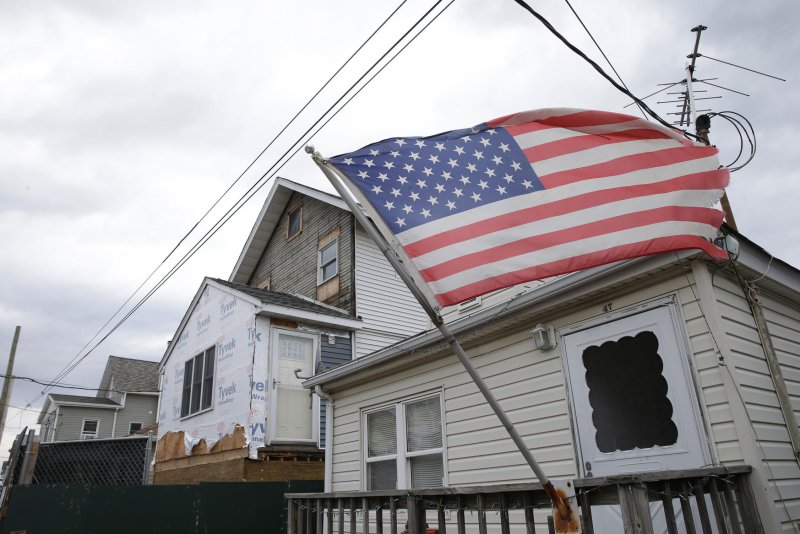Construction workers repair homes in Broad Channel, New York, on October 26, 2017. According to Census data Wednesday, the median annual household income in the United States climbed nearly 2 percent in 2017, to just under $61,400. File Photo by John Angelillo/UPI |
License Photo
Sept. 12 (UPI) -- Average household incomes in the United States climbed for the third straight year in 2017 and poverty rates declined, according to new data Wednesday from the U.S. Census Bureau.
The 74-page report, titled "Income and Poverty in the United States," said the median U.S. household income was $61,372 last year, up nearly 2 percent from 2016. While significant, the increase in household income made larger jumps in both 2015 and 2016.
The Census Bureau also detailed a decline in the poverty rate -- 0.4 percent to 12.3 percent. The Bureau of Labor Statistics reported this month the unemployment rate remains historically low, at 3.9 percent -- its lowest level since 2000.
"If you look at unemployment and overall wages, those have been improving over the last few years, and as a result poverty has been dropping," Mark Rank, a professor at the University of Washington in St. Louis, told NBC News. "But the reach of poverty remains wide and half of American will experience some type of it. If we compare ourselves to other industrialized countries, then we still have a very high amount."
The Census figures also showed that nearly 2.3 million more Americans bought health insurance under the Affordable Care Act from 2016 to 2017, for a total of nearly 295 million people. Still, an estimated 28.5 million people went without any coverage last year -- a slight increase over 2016.
In 2010, before the Affordable Care Act became available, 16.3 percent of the U.S. population had no health coverage. Now, that figure's at 8.8 percent -- meaning nearly 92 percent of all Americans had coverage for all or part of 2017, the Census data showed.
Wednesday's report also said the effects of the Republican-led tax overhaul last year should benefit the average taxpayer, who could save more than $2,000.















